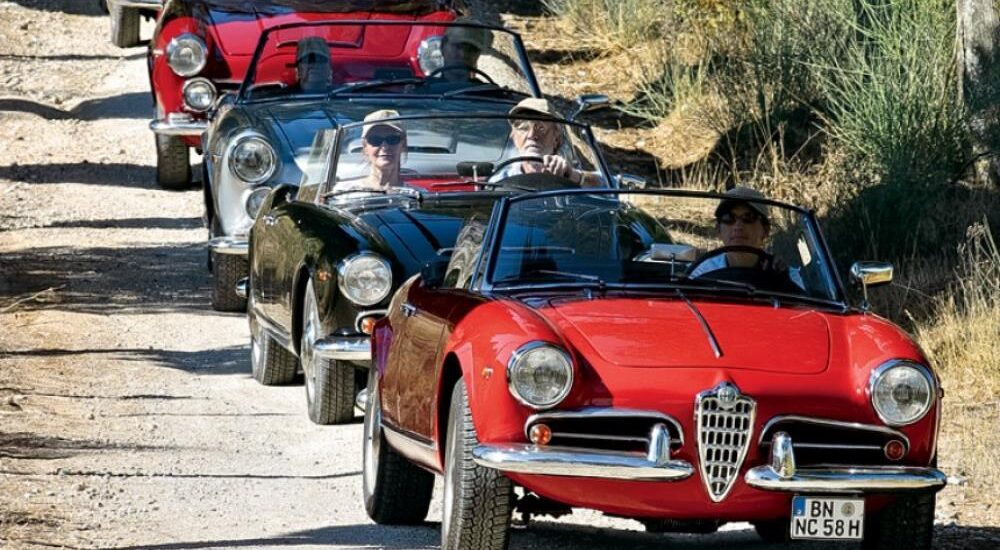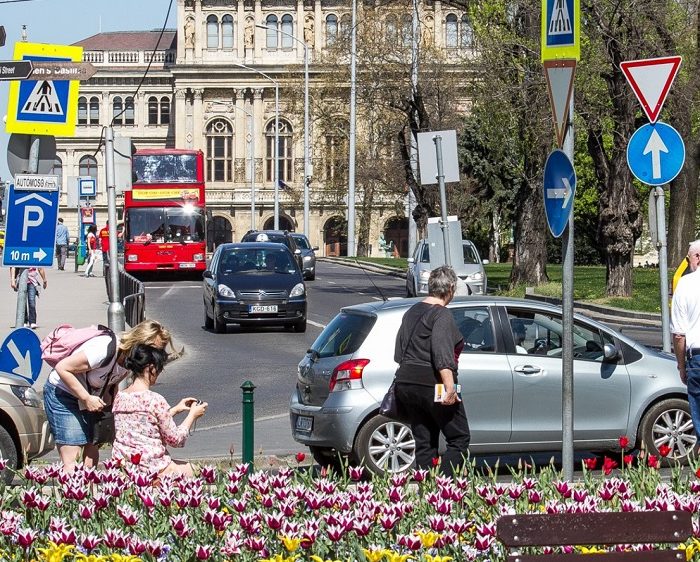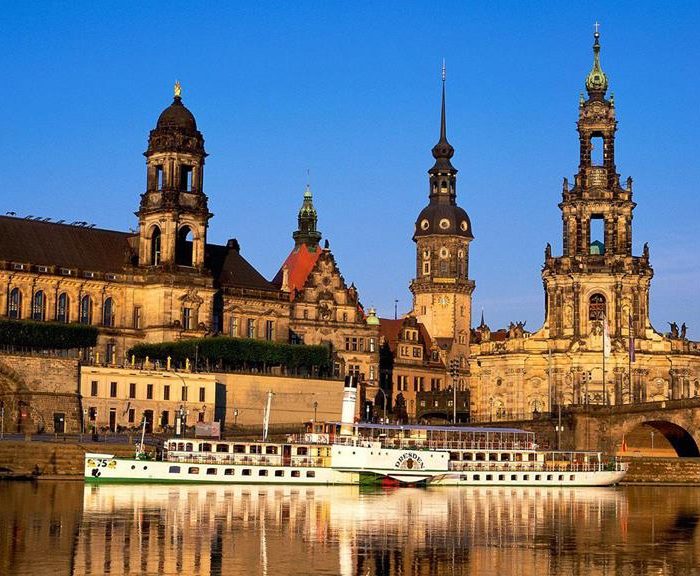Err. Err-rr! In qualche modo, l’inglese Adam non riesce a inserire la seconda marcia sull’Alfa Romeo Giulietta Spider. “Hai detto doppia frizione?”, esclama. “Err. Err-rr-rr-rr!”. Gli dico che non funziona. Come si fa a guidare con un cambio del genere? Va bene, Adam, è perdonabile. Ti hanno insegnato a guidare un camion GAZ-52 con un cambio non sincronizzato nella ricca Inghilterra? Lasciatemi fare.
L’evento, organizzato dalla società privata tedesca Nostalgic Tours, è abbastanza simile a un normale test drive di un giornalista automobilistico. Si vola in Italia, si viene accoppiati con le auto, si riceve un roadbook, che è una leggenda del percorso da seguire, e si parte per le strade della Toscana. Poi una cena, una notte in un buon albergo e un’altra giornata quasi intera di guida. L’unica differenza è che le auto non sono nuove, ma vecchie: Alfa Romeo spider degli anni ’50, ’60 e ’70. E lo stesso marchio Alfa Romeo non ha un legame diretto con i “tour nostalgici”: alcuni alfisti tedeschi, amanti delle vecchie Alfa, hanno deciso di condividere la loro passione con il mondo e l’hanno trasformata in un piccolo business. Hanno acquistato una ventina di auto retrò del loro marchio preferito, hanno assunto un ex meccanico da corsa italiano per la loro manutenzione e offrono “tour nostalgici” per circa 2500 euro a persona.
Per me questo tour ha un significato completamente diverso: se un sovietico può provare nostalgia, probabilmente è solo per le Zaporozhet gibbose, le VAZ “kopeyka” o quel “gazon” il cui cambio ho bloccato mentre ricevevo qualche colorita lezione di lingua dal mentore dello Stabilimento Auto n. 1. L’Alfa Romeo Giulietta, Giulia o Spider non erano altro che un sogno, un sogno che si poteva leggere solo sulla rivista DOSAAF Dietro il volante.
E ora eccomi qui, insieme all’inglese Adam, a provare tutte le auto del parco Nostalgic Tours. Seguendo la cronologia, dovremmo iniziare con la prima Alfa.
Allora, si chiamava Giulietta…

Primi anni Cinquanta, Italia che esce dalla depressione del dopoguerra, trasporti di massa: biciclette, scooter Isetta prodotti su licenza della BMW. La grandezza dell’Alfa Romeo d’anteguerra appartiene al passato, quando le bellezze a otto cilindri e le vittoriose auto da corsa venivano costruite con i fondi del governo fascista. La guerra era ormai alle spalle: la produzione di motori per i caccia e i bombardieri italiani, la completa distruzione dello stabilimento principale del Portello a Milano, i tentativi di produrre stufe da cucina nella superstite filiale meridionale di Pomigliano. Ma gli ingegneri innamorati della velocità non abbandonarono l’Alfa Romeo: il designer Orazio Satta, il costruttore di motori Giuseppe Busso, il creatore della “formula” Alfa Romeo 158 di prima della guerra, Giuseppe Colombo. Anche se il primo modello del dopoguerra si rivelò un fallimento: l’Alfa Romeo 1900 berlina era troppo grande e costosa per l’Italia impoverita. Così, con tutti i mezzi, con presentazioni altisonanti e con l’annuncio di una lotteria nazionale (i cui vincitori non ricevettero mai le 200 vetture iniziali promesse), l’Alfa Romeo riuscì a raccogliere fondi per un modello di massa più compatto, che fu messo in linea di montaggio nel 1954 con il nome di Giulietta.
Alcuni dicono che il nome, il primo “personale” per l’Alfa Romeo, fu suggerito dalla moglie del famoso poeta italiano dell’epoca, Leonardo Sinisgalli. Altri citano un certo nobile russo che faceva l’impresario in un locale notturno di Milano e che scherzava quando si presentavano quelli dell’Alfa Romeo: “Avete otto Romeo qui e nemmeno una Giulietta?”.
In ogni caso, Giulietta è emersa come una bellezza. Anche la berlina era bella, molto più attraente della sua contemporanea sovietica, la Moskvich-402. E la coupé di Bertone e la spider di Farina…


Ciò che temevo di più era la rigidità e la famigerata “posizione di guida italiana” che avvolge il piantone dello sterzo con le gambe, i pedali della frizione e del freno e l’acceleratore sospeso. Il sedile compatto è posizionato praticamente a livello del pavimento, consentendo di sedersi in una postura da auto da corsa con le gambe distese. In prospettiva, se la si paragona a una supercar dell’epoca, come la Jaguar E-Type, nella quale mi sono recentemente “infilato” durante il rally Monte-Carlo Historique, la Giulietta trionfa in termini di ergonomia con la sua elegante sensazione dei pedali. È come se la Giulietta vi toccasse delicatamente con un piede aggraziato in una scarpa elegante. Nella “E-Type” si sta seduti un po’ ingobbiti, mentre qui ci si reclina a metà, come se ci si adagiasse su una chaise longue. È la dolce vita, la dolce vita sotto lo sconfinato cielo dell’Appennino!
Ma procedete con cautela: non ci sono cinture di sicurezza, non ci sono dispositivi di sicurezza di cui parlare e il mozzo del volante è diretto proprio sul vostro petto. Mentre percorrete una curva caotica, potreste chiedervi se il prossimo scooter che si avvicina a rotta di collo sceglierà il lato sinistro.
Ma non temete: con l’Alfa queste preoccupazioni non vi assaliranno. Quest’auto è nata per portare solo felicità!
I pedali sottili sono incastonati vicino al tunnel della trasmissione: freni e frizione montati a terra, completati da un acceleratore sospeso. Quando si preme sul pedale dell’acceleratore, il motore da 1300 cc inizialmente fatica, non per le emozioni, ma per l’abbondanza d’aria. Sembra che la valvola di non ritorno della pompa dell’acceleratore abbia difficoltà a trattenere l’aria.


Ah, dov’è la mia tredici e la VAZ “kopeyka” bianca con targa nera 57-71 MTB? All’epoca, nei primi anni ’80, il suono del motore “italiano” accarezzava le orecchie in mezzo alle basse auto di produzione moscovita – e ora, riconosco quei toni setosi della “VAZ”. L’Italia classica! Dopotutto, l’architettura di questo “quattro” era stata definita già prima della guerra dal leggendario Vittorio Jano, dal costruttore di motori Lanzi e dalla Ferrari. Blocco in alluminio con camicie in ghisa, albero motore forgiato a cinque cuscinetti, camera di combustione emisferica, due alberi a camme “superiori” azionati da una catena a doppia corona, candele in posizione centrale. In diverse varianti, questo motore è rimasto nelle catene di montaggio del Gruppo FIAT fino al 1995!
Quando finalmente il carburatore aspira il carburante attraverso tutti i suoi intricati canali e il tiro è regolare, non è sufficiente: il motore non ha la potenza necessaria per affrontare le salite più ripide e bisogna scalare gradualmente la prima marcia. Nikita Gudkov ha lodato la Giulietta coupé per la sua dinamica di accelerazione, ma era alla guida di un’auto privata ben tenuta. Le auto di Nostalgic Tours sono considerate a noleggio ed è improbabile che la maggior parte dei conducenti sappia come gestire correttamente la delicata tecnologia retrò.

La Giulietta era famosa non solo per il suo design ma anche per la sua maneggevolezza! La Moskvich-402 dell’epoca, prodotta a Mosca, aveva un motore “in ghisa” a valvole basse da 35 cavalli, solo tre marce con cambio a leva sotto il volante e un assale posteriore su molle a balestra – e anche il motore Moskvich-407 del 1958, già con valvole in testa, testa in alluminio e alesato a 1360 cc, sviluppava solo 45 cavalli. Mentre il motore della più semplice Giulietta berlina aveva 53 CV, moltiplicati per quattro marce “corte”, e nella coupé e nella spider, lo stesso motore da 1300 cc veniva portato a 81 cavalli! C’era anche la Giulietta Veloce, più leggera e messa a punto, “Veloce”: 90 CV e meno 75 kg di peso a vuoto…
Il sottile volante in plastica nera “simile a un osso” inizialmente sembra leggero, ma non appena lo si gira, le mani ne avvertono il peso: il frontale dell’auto si sposta immediatamente di lato, superando la sua insufficiente manovrabilità. Ma in un attimo Giulietta si adatta, il volante si “alleggerisce”… È merito delle sospensioni indipendenti “all around” della Lancia, che esistevano già prima della guerra, e Horacio Satta e colleghi optarono per una variante più economica: un asse posteriore indiviso. Anche se è sospeso su molle e collegato alla carrozzeria con una terza leva centrale a forma di “A”. Ma nemmeno gli ammortizzatori rossi Koni Classic abbinati a pneumatici radiali Uniroyal da 15 pollici riescono a compensare le imperfezioni cinematiche. Pertanto, le curve veloci della Giulietta devono essere affrontate con uno “sterzo di ricerca”, in equilibrio tra una manovrabilità insufficiente e una eccessiva.

E il cambio? In salita, solo con la doppia frizione, e in discesa, con un salto intermedio in folle per far girare l’albero primario. In realtà, le trasmissioni delle Giulietta roadster erano completamente sincronizzate, un lusso per l’epoca. Inoltre, gli italiani acquistarono una licenza per i sincronizzatori dalla Porsche. Ma quest’auto in particolare sembra piuttosto usurata: la carrozzeria risplende di vernice fresca, le cromature brillano sotto il sole italiano, ma i sincronizzatori sono “morti”. Err-rr-rr-rr, err-rr-rr! L’inglese Adam non ha fatto altro che riempire le colline toscane con un terribile stridio di marce e ha perso slancio, non riuscendo a inserire la seconda marcia dopo la terza o la quarta.
Checché ne dicano gli altri, io resto fedele al principio di Suvorov: “Duro in allenamento, facile in battaglia!”. In gioventù ho imparato a guidare sui “tronchi”: guidavo qualsiasi cosa avesse dei pistoni, indipendentemente dalla presenza di freni o dal gioco del volante – se puoi guidare quello, puoi guidare qualsiasi cosa!

Una pausa pranzo: un’occasione per passare alla Giulia. Si trattava di un cambio di generazione, ma mentre le berline Giulia differivano in modo significativo dalle Giulietta, le coupé e le roadster subirono un ammodernamento minore. Inoltre, si trattò di un processo graduale (ricordate il passaggio dalle VAZ “dieci” alle Priora?). La trasformazione della Giulietta in Giulia iniziò nel 1959 con un passo più lungo e fu completata nel 1965, quando un motore più grande da 1600 cc richiese l’aggiunta di narici alla presa d’aria. Un ornamento discutibile, ma 90 CV – ora sì che è più divertente! Il cambio di quest’auto era in perfetto ordine: le marce si innestavano senza problemi, con facilità e precisione. Ma i freni! Semplicemente non c’erano freni anteriori; solo quelli posteriori funzionavano. Se si preme un po’ di più, si scivola! Fu quest’auto che in seguito ebbe un incidente che coinvolse la moglie di un uomo d’affari-editore olandese: lei frenò troppo forte prima di una curva e la bella Alfa andò immediatamente in testacoda e colpì una barriera con il bagagliaio. Per fortuna, non troppo gravemente.
Ma un camion di evacuazione segue il convoglio per casi del genere, con un’auto sostitutiva – e anch’io ho dovuto ricorrere ai suoi servizi. Sono alla guida di un’Alfa Romeo 2600 cabrio e all’improvviso…


Una fila di doppi alberi a camme in testa alimenta il motore a sei cilindri: 145 cavalli, dotato di tre carburatori Solex, ma… la scintilla sembra essere svanita.
Quest’auto è la prova evidente che “più costoso” non significa necessariamente “migliore”. Questo modello non aveva un nome proprio: l’indice 2600 rifletteva la cilindrata del “sei” in linea, che finalmente tornava sotto i cofani delle Alfa stradali per la prima volta dall’anteguerra. Nel 1961 l’Alfa 2600 berlina sostituì la precedente ammiraglia Alfa Romeo 2000, e le coupé e le roadster basate su di essa furono progettate rispettivamente da Giugiaro e dalla Carrozzeria Touring. Cercarono di mantenere il design nello stile della Giulietta e…
Beh, certo, è bellissima. Ma non c’è più quella sensazione di organicità. I sei cilindri hanno un suono più morbido e raffinato rispetto ai quattro della Giulietta, e le sospensioni sono più confortevoli: mentre la Giulietta sobbalza continuamente su una strada dissestata con la sua carrozzeria leggera (che rimane comunque solida e monolitica), l’Alfa 2600 ha una guida sensibilmente più fluida. Ma l’auto è più pesante e accelera più lentamente. E lo sterzo è pesante in curva: difficile da girare! Sottosterzo pronunciato.

Così pronunciata che non c’è alcun desiderio di andare veloce. Si naviga con calma, guardandosi intorno e osservando la bellezza della Toscana. Le colline scarsamente boscose, i filari di cipressi sentinella che costeggiano i sentieri rettilinei ricoperti di ghiaia bianca, i vigneti infiniti…
E, naturalmente, una decappottabile: è un livello completamente diverso di connessione con il mondo circostante. Soprattutto una vecchia decappottabile. Quando il rumore del vento e il cinguettio degli uccelli si fondono con il rombo gutturale del motore a carburatori, e l’odore amaro degli scarichi “impuri” si mescola con gli aromi della benedetta terra toscana…
E il vento in faccia, appunto.
Ma all’improvviso – “tr-r-r-r-r”: il motore perde potenza e si blocca. Come se qualcuno lo avesse spento. Mi sono girato di lato usando il motorino di avviamento, ho sollevato il cofano… Ah, ho perso le mie capacità. Prima, senza esitare, avrei controllato il livello del carburante nella camera del galleggiante o avrei tirato il filo dell’alta tensione per vedere la scintilla. Ma è passato un po’ di tempo dall’ultima volta che ho impugnato una chiave inglese e l’Alfa non è una Zaporozhets. Così, 15 minuti dopo la telefonata, il co-proprietario di Nostalgic Tours, Gert Pichler, arrivò con la sua collega, l’adorabile ragazza russa Alena Bychikhina, e caricarono l’Alfa 2600 “morta” sul camion di evacuazione; in cambio, Adam e io ricevemmo un’Alfa Romeo Spider.


Nel 1966 sostituì la Giulia, con un design aerodinamico e basso che ricordava la Jaguar E-Type. Ma la tecnologia era molto più semplice: ancora un assale posteriore rigido e uno sterzo del tipo “vite senza fine e chiocciola”. Il nome iniziale “Duetto”, ottenuto grazie a un concorso nazionale, non prese piede: a partire dalla metà degli anni ’70, la vettura fu conosciuta semplicemente come Spider. E io sto guidando una vettura di seconda generazione dei primi anni ’70, già con il posteriore tronco e un motore 2 litri da 133 CV.
Gli interni sono in plastica nera e gli indicatori della strumentazione sono rivolti verso il basso, come nelle moderne Alfa. L’erogazione della potenza è allegra e regolare, anche se con le tipiche esitazioni del carburatore. I freni sono moderni, con un booster a depressione: il pedale è leggero, l’auto non si affloscia… Ma la maneggevolezza è ancora a livello degli anni ’90: le reazioni nella zona vicina allo zero sono pigre, poi il volante si carica improvvisamente di sforzo e la reattività aumenta. Inoltre, ci sono reazioni “gommose”: i pneumatici sono a profilo pieno, direttamente dagli anni ’60.
E si sente la strada in modo più acuto rispetto alle auto moderne. Anche sull’asfalto liscio si avvertono costantemente leggere vibrazioni e, non appena si svolta su una strada sterrata, l’abitacolo inizia a vibrare e il volante ha un gioco notevole.
Ma la Spider di quei tempi era tutt’altro che una supercar, proprio come la Giulietta-Giulia. Oggi questa nicchia è occupata da auto come l’Audi TT o la BMW Z4: auto costose, ma ancora accessibili non solo ai milionari. Attrici e artisti, avvocati e dentisti le hanno comprate… E si sono goduti la vita.
È questo che vendono gli organizzatori dei “tour nostalgici”: l’opportunità di essere come la “classe media” di successo di mezzo secolo fa. E per amore dell’autenticità, organizzano cene in un castello-museo, dove i proprietari accolgono personalmente gli ospiti ed espongono dipinti di famiglia, mobili, stoviglie, abiti o bambole di porcellana raccolti nel corso dei secoli. Oppure in un piccolo ristorante a conduzione familiare, dove un enorme piatto di pasta fatta in casa generosamente cosparso dei più delicati tartufi trovati nei boschi locali costa appena dieci euro. Quattrocento rubli nella nostra valuta, ed è così delizioso che si è disposti a ingoiare la propria lingua.


Riconoscete gli indicatori supplementari circolari e gli sbrinatori circolari del cruscotto? Sono della FIAT.
In breve, dall’Italia.
E qui…
A cavallo tra gli anni ’50 e ’60, mio padre, se poteva sognare una decappottabile, poteva solo sognare la GAZ-69 “capra”. Ma allora guidava un camion GAZ-51 – quando nel 1956, gli studenti dell’Istituto minerario degli Urali furono mandati a raccogliere il famoso “miliardo d’oro”, un raccolto di grano inaspettatamente abbondante dalle steppe kazake recentemente arate. Il grano stava marcendo, veniva scaricato nelle paludi vicine, non c’erano abbastanza persone, macchine, ascensori o vagoni ferroviari. Gli studenti portati in Kazakistan non avevano nulla da mangiare, così mandarono mio padre a casa a Sverdlovsk per un fucile. Lui e un amico salirono gratuitamente sui vagoni dei treni, godendosi il vento in faccia, e portarono alla stazione di Mamlyutka una “tulka” calibro 16, cercando di sparare alle anatre di passaggio per ottenere un po’ di carne…
Ahimè, non avevamo né roadster né spider, non avevamo una vita facile. La nostra nostalgia per le Alfa è immaginaria. Come una falsa gravidanza o un dolore fantasma. Abbiamo avuto la Belka e la Strelka, abbiamo avuto lo Sputnik e Gagarin, abbiamo avuto il Tu-22 e il BTR-60. E abbiamo avuto la Pobeda e la Volga, la “emka” e la “uno e mezzo”…
Li ho guidati anch’io. Non in Italia, ovviamente, ma a Nizhny Novgorod, al Gorkyclassic GAZ anniversary festival. Vi racconterò di più la prossima volta.

Foto: Compagnia Nostalgic Tours | Leonid Golovanov
Questa è una traduzione. Potete leggere l’articolo originale qui: Леонид Голованов поездил на старых Alfa Romeo из колекциии Nostalgic Tours

Pubblicato Agosto 30, 2023 • 15m da leggere





